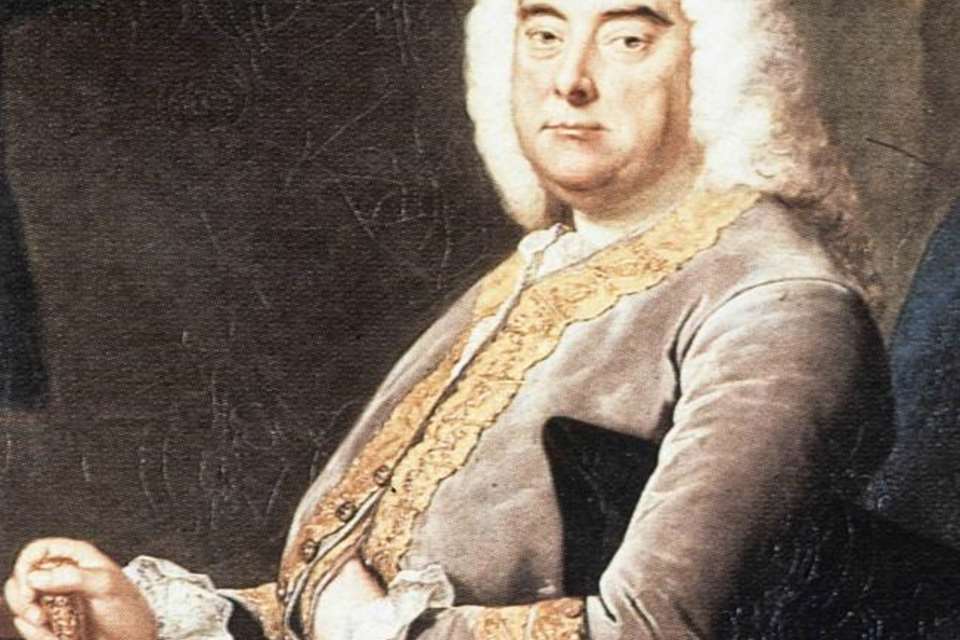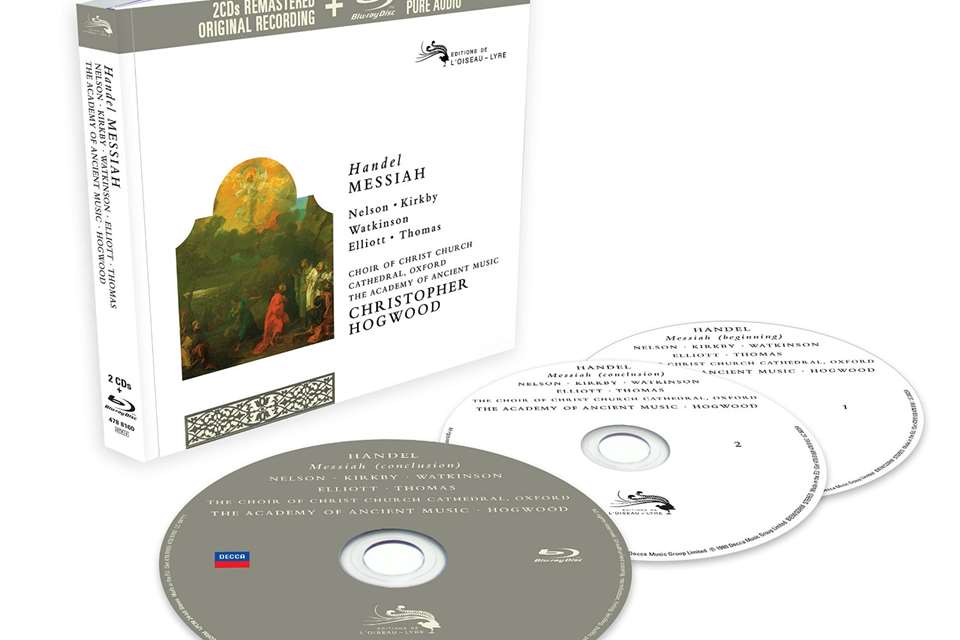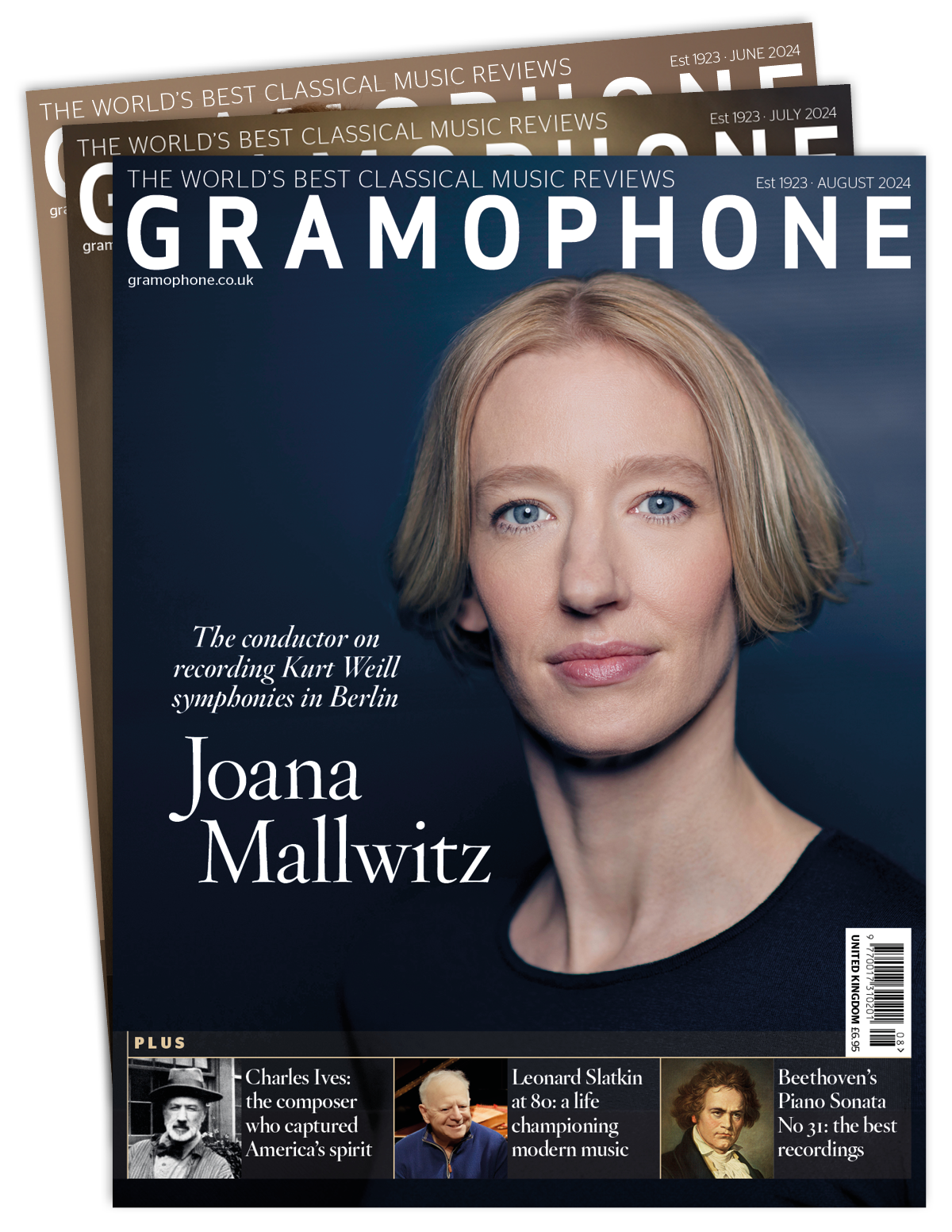Handel's Messiah: a complete guide to the best recordings
Tuesday, April 12, 2022
The perennial fame of Handel’s oratorio has inspired a host of contrasting approaches to text and performance. David Vickers mulls over the finest recordings

Handel started composing the score of Messiah on August 22, 1741, and, after 24 days of concentrated creativity, finished its complete draft on September 14. The autograph score as it stood in autumn 1741 contained various musical contents distinct from later and more familiar reworkings and substitute settings. In the event, he never performed the oratorio in its first original completed form. Contrary to the librettist Charles Jennens’s expectation that the oratorio would be premiered in London, the composer took the score with him to Dublin, where, after giving 12 subscription concerts of different works, he organised the first performances of Messiah for the benefit of Mercer’s Hospital. Several revisions and a substitution were carried out before the premiere at Neale’s Musick Hall on April 13, 1742, and a repeat performance on June 3.
After his return to England, Handel performed Messiah another 36 times. For the first London performance at Covent Garden in March 1743, a few small but significant substitutions had new music: the recitative ‘And lo, the angel of the Lord came upon them’ was replaced by an arioso setting with continuo accompaniment, created for the actress-singer Kitty Clive, and a tenor arioso setting of ‘Their sound is gone out’; neither was used again by Handel after 1743. The second, common-time setting of ‘Rejoice greatly’ and the chorus treatment of ‘Their sound is gone out’ were probably composed for his next revival at the King’s Theatre in April 1745. A single performance at Covent Garden in March 1749 was probably when the verses of ‘He shall feed his flock’ (hitherto always a solo number) were distributed between alto and soprano.
From 1750 Messiah became an annual feature of Handel’s Covent Garden Lenten concerts, and after the end of each season there were also charitable benefit performances of the oratorio at the chapel of the Foundling Hospital. In 1750, new settings of ‘But who may abide’, ‘Thou art gone up on high’ and ‘How beautiful are the feet’ were composed for the alto castrato Guadagni. Thereafter, performing versions of the early 1750s were more or less fixed in musical substance but malleable in small reallocations and transpositions as required by shifting circumstances. For example, the 1751 performances at the Foundling Hospital were given by all-male soloists, with most of the soprano airs shared out between several boy trebles. Two performances at Covent Garden during Holy Week 1752 were a rare instance of four SATB soloists (Guadagni was away singing in Dublin, so the airs rewritten for him were allocated to a female alto); other than its shortened ‘Why do the nations’ (preferred by Handel in opposition to bass soloists and audiences ever since), the 1752 version most closely resembles the standard conflated text typically presented in modern uncut performances. Nevertheless, allocations of solo numbers were juggled in subsequent revivals; the alto version of ‘If God be for us’ was sung by Guadagni in 1753 but, after his departure from London, material that had been composed or reworked for him was transposed up for the soprano Passerini in 1754.
Just 15 recordings (not all considered here) purport to recreate the score as it stood for one of Handel’s own versions, although not all were researched and executed reliably. A few conductors go for a pick-and-mix approach that injects unusual variants into a predominantly familiar text, although this seldom proves wise. The majority opt for the familiar standard conflation of movements first codified by Ebenezer Prout (Novello: 1902), notwithstanding that his orchestration continued the customary Victorian bowdlerisation of Mozart’s 1789 arrangement.
Aiming for Handel’s intentions
The first recording to strip away reorchestrated accretions and restore Handel’s original instrumentation was Hermann Scherchen’s performance with the London Philharmonic Choir and London Symphony Orchestra. Some tempos are surprisingly progressive in their flowing momentum, and probably seemed frantic on its release in 1954, although a few other speeds are freakishly slow even for their time (‘Their sound is gone out’ is weirdly hushed and glacial). This was the first recording to feature the 1750 setting of ‘But who may abide’ in its proper form sung by an alto (misconceived assignations to bass have not entirely gone away; see Cleobury’s 2009 account).
This was followed hot on its heels by Adrian Boult’s essentially traditionalist Messiah but with correct instrumentation restored. There are some remarkably ponderous half-speed tempos with scant stylistic hallmarks such as trills (‘O death, where is thy sting’ has more deathliness than it should), and the large chorus and London Philharmonic Orchestra are heavy-handed. Boult’s 1961 recording with the LSO (Decca Eloquence, 11/61) is less effective but Joan Sutherland’s Donizetti-esque over-embellishments and cadenzas in rehearsals reputedly prompted the conductor’s infamous quip about her ‘Mad Scenes from the Messiah’.
The LSO’s next recording five years later was conducted by Colin Davis (Philips, 11/66), who achieved revelatory lightness of pacing (for its time) and detailed transparency. Released a few months later, Charles Mackerras staked an even bolder claim to be making ‘some attempt to retrieve a performing style consistent with early 18th-century practice’, and his soloists ‘encouraged to invent certain embellishments spontaneously, in accordance with the practice of Handel’s day’. Lesser-known variants included the original 12/8 ‘Rejoice greatly’, the 1750 settings of ‘But who may abide’ and ‘Thou art gone up on high’ (recorded for the first time by a countertenor, Paul Esswood), the Dublin duet and chorus ‘How beautiful are the feet … Break forth into joy’ and the 1743 arioso ‘Their sound is gone out’ (Robert Tear on imperious form). In retrospect, the ECO’s copious trills, lumpy appoggiaturas and exaggerated dotted rhythms are over-applied. The ECO’s next Messiah four years later with Richard Bonynge (Decca, 9/70) has eccentric gaudiness, a thick plastering of unidiomatic embellishments (even in the orchestra), over-elaborate continuo realisations and some appalling solo singing.
A radically different but no less idiosyncratic world was charted by David Willcocks with the Choir of King’s College, Cambridge, and the Academy of St Martin in the Fields (EMI, 6/73). Soprano solos are sung by the assembled choirboys in unison – an unconvincing anachronism. Four years on, the Academy returned to Messiah under Neville Marriner with a performing edition by keyboardist Christopher Hogwood that aimed to reconstruct Handel’s 1743 first London revival, including some of its weirder variants (later research has revealed a few editorial details were incorrect). It still stands up more convincingly than Marriner and the ASMF’s patchy live recording made in Dublin in 1992 (Philips, 2/93).
The 1980s Early Music Revolution
The soundscape, musical text and aesthetic world of Messiah were transformed when Christopher Hogwood directed his own independent artistic vision of the oratorio with the Academy of Ancient Music, based closely on the 1754 Foundling Hospital performances. The first recording to use period instruments, the shock of over-familiar music sounding new again while striving to recapture the composer’s expectations and practices was achieved by the textures, timbres and musicianship of the AAM’s large band, the agility and precision of the Choir of Christ Church Cathedral, Oxford, radically fresh-voiced (and largely vibrato-free) soloists and tempos that took Handel’s rubrics more seriously than comfortable tradition had dictated.
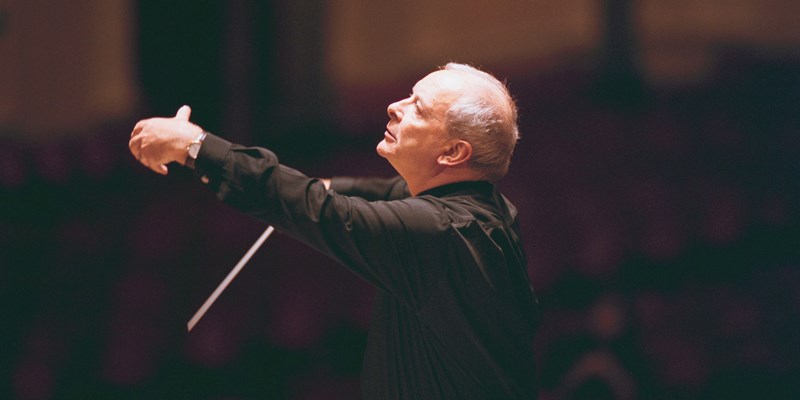
Hogwood: trailblazing musicianship on period instruments (photography: Marco Borggreve/Decca)
The disciplined polish, shaping of words and general élan of John Eliot Gardiner’s Monteverdi Choir set a new high standard for professional mixed adult chamber choirs, and the English Baroque Soloists provided expert playing (natural trumpeter Crispian Steele-Perkins making the first of his seven appearances in the discography). Anthony Rolfe Johnson is the finest of the uneven soloists. Like many since, Gardiner deploys solo violin in ‘If God be for us’ where Handel indicated tutti violins in unison.
Using a mostly typical conflation based on early 1750s versions, Trevor Pinnock’s direction married the rediscovered stylistic implications and textures of The English Concert’s period instruments with a comforting nobility, grandeur of conception and religious awe; some tempos are measured and weighty by Hogwood and Gardiner’s standards, and the mixed choir is fuller-bodied. Arleen Auger is on radiant form, Anne Sofie von Otter spellbinds in a profoundly moving and intelligently ornamented ‘He was despised’ and Michael Chance’s remains the best countertenor ‘But who may abide’ on disc; Howard Crook is lyrical but overshadowed by John Tomlinson’s Wotan-like utterances.
Andrew Parrott’s performance was recorded in the same Abbey Road studio just a few months later. The Taverner Choir and Players’ interpretation is packed with compelling ideas regarding instrumental rhetoric, the sculpting of choral fugues and numerous details of tasteful ornamentation in the arias (sung insightfully by Emma Kirkby, Margaret Cable, James Bowman and David Thomas). Based on Handel’s 1753 performing version, Parrott has an uncanny knack for setting each mood, tempo and texture just right. Possibly the best-conducted Messiah of its kind if each movement is taken out of context, EMI’s poor editing created too many prolonged silences between tracks that thwart the cumulative momentum of the experience.
Consolidating ‘HIP’ in the 1990s
The music-making of Nicholas McGegan and the Philharmonia Baroque Orchestra is always interesting but dry sound reduces its emotional power, the chamber choir of Berkeley students lacks sustained resonance and impact, and some soloists are fragile (Lorraine Hunt an enthralling exception). The sole departure from the norm in the main performance is the 1741 original 41-bar long ‘O death, where is thy sting?’ (also chosen by Ton Koopman and Masaaki Suzuki). However, McGegan reframes our perspective by adding appendices after each part that contain almost all alternative music from Handel’s 1741 autograph, 1742 Dublin, 1743 Covent Garden and other versions.
William Christie, having played harpsichord in some of Hogwood’s sessions in 1979, directed his own interpretation with Les Arts Florissants in 1993. The tautly detailed orchestral playing and affectionate choruses are matched aptly by several soloists (Andreas Scholl singing all of the alto solos), although Barbara Schlick’s forced singing is less satisfying.
Recorded in the chapel at King’s College, Cambridge, Stephen Cleobury’s success with the 1752 version is rooted in Roy Goodman’s leadership of the outstanding Brandenburg Consort, impeccable singing by the all-male choir, and four flawless SATB soloists: Lynne Dawson (her finest of four Messiah recordings), Hilary Summers (compassionate in ‘He was despised’), John Mark Ainsley’s honeyed tenor and Alastair Miles’s bold authority. As part of the same project, a concert by the same forces was filmed live at the Pieterskerk in Leiden in March 1993, issued on DVD and budget-price CD (Brilliant Classics). Cleobury’s later recording with the Academy of Ancient Music (EMI/Warner, 9/09) is less rewarding.
Paul McCreesh and the Gabrieli Consort & Players were the first since Hogwood to present the 1754 Foundling Hospital version, and with close to the right sorts of numbers of players and voices. Paced with urgent theatricality, and with superb sound engineering, the orchestra and choir are dynamically vivid. There are a few rushed tempos and a couple of awkward Germanic soloists, but, on the other hand, Charles Daniels’s mellifluous and intelligent ‘Comfort ye’ has never been bettered.
Curiously, less than a year later, DG’s Archiv label recorded Messiah again – this time with Marc Minkowski’s Les Musiciens du Louvre. Created as a soundtrack to William Klein’s cinematic (and subversive) treatment of the oratorio, the complete set (albeit with some cuts in Part 2) was not issued until 2001. Few among the eight soloists are persuasive Handelians, and many of Minkowski’s choruses are ill‑advisedly frantic.
Exploring Handel’s versions
Jeffrey Thomas and the American Bach Soloists (Delos) reconstruct the 1741 autograph version of the oratorio with a convincing level of accuracy; if not without blemishes, there are aspects of the 2004 live performance that are enjoyable. Toshiki Misawa and his Cannons Concert Chamber Choir and Orchestra (ALM Records, live in 2018) also produce a stylish account of the 1741 autograph version, reaching some small conclusions differently from Thomas.
Although several previous recordings claimed incorrectly to adopt the Dublin 1742 version of Messiah, such as Jean-Claude Malgoire’s scrappy attempt (Sony, 12/80) and the incongruously named Scholars Baroque Ensemble (Naxos, 4/93), John Butt’s reconstruction is a joyful fusion of artistic vision and philological inquisitiveness. The Dunedin Consort and Players include all variants unique to 1742, and replicate the practice of seven soloists also performing the choruses (with six reinforcements) and a magnificent small orchestra of 17 players without oboes or bassoons (probably not available in Dublin).
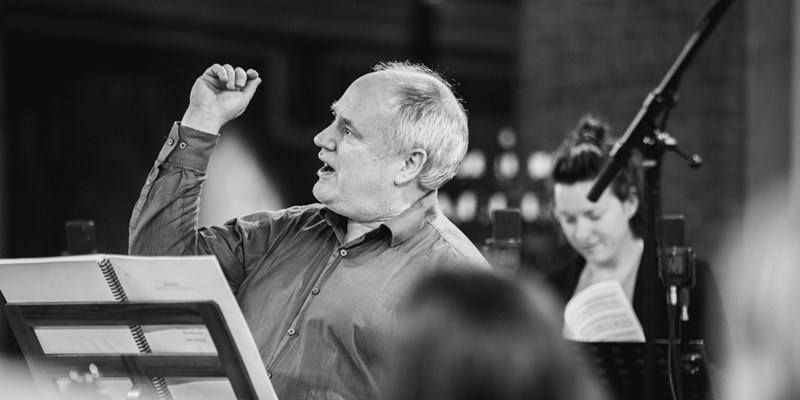
John Butt: sincere and revitalising in 2006 (photography: Andrew McCoy)
Hans‑Christoph Rademann’s attempt at the Dublin version gets a lot of things wrong regarding the scale and function of Gaechinger Cantorey. Some unusual features of the 1742 score are absent and it is anachronistic to assign all of the alto solos to a countertenor (conversely, Dorothee Mields’s ‘Rejoice greatly’ is sensational).
René Jacobs opts for the 1750 version (with a few discrepancies). The numbers rewritten for the castrato Guadagni are sung ardently by Lawrence Zazzo. The Choir of Clare College are assured and the Freiburg Baroque Orchestra technically fantastic, but Jacobs’s widespread tinkering with orchestration, micromanaged continuo accompaniments, unreliable tempos and various other musical problems leave a bitter taste.
Edward Higginbottom’s decision to recreate Handel’s 1751 Foundling Hospital performances means that three different talented boy trebles take turns in the soprano solos, ‘Rejoice greatly’ is transferred to tenor and all of the alto solos are sung beautifully by Iestyn Davies (the castrato Guadagni not being readily available any more); former New College choral scholars Toby Spence and Eamonn Dougan sing the tenor and bass solos. The Choir of New College, Oxford, is admirably shapely and communicative, and the Academy of Ancient Music is on top form (David Blackadder shining in ‘The trumpet shall sound’).
Hervé Niquet’s Parisian recording with Le Concert Spirituel claims to present the 1754 Foundling Hospital version but ignores documentary evidence about orchestral forces, opts for the long version of the Pifa (certainly shortened by 1754) and cuts down ‘The trumpet shall sound’ to only its A section (which Handel never did). Widespread destruction is wreaked by Niquet’s manic tempos.
Maintaining Standards
Over the past 15 years, as one might expect, the majority of recordings maintain the standard conflated text of Messiah and strive to give a straightforward performance using a hybrid of comfortable choral traditions infused with elements of Baroque style.
Serene loveliness is the overriding impression from John Rutter, his Cambridge Singers and the Royal Philharmonic Orchestra doing a smooth imitation of period style (Collegium, 2007). Stephen Layton conveys a firmer sense of purpose and controlled tension in Polyphony’s disciplined choral singing, and the Britten Sinfonia shows that modern instruments can play in all sorts of ways not immediately distinguishable from period instruments unless one listens carefully; there are a few interpretative quirks but the four soloists are routinely brilliant. Jane Glover and the Northern Sinfonia’s one-take live recording is unobtrusively well-judged, with natural flowing tempos and a knack for insightful textures across the board. The Huddersfield Choral Society’s lightly articulate post-HIP poise, flexibility and crisp diction show a different universe from the hallowed days of Malcolm Sargent; the great northern choral society tradition still lives and evolves in the present day.
Nevertheless, period instruments are the new orthodoxy. Harry Christophers has conducted three recordings of Messiah, the pick of which is The Sixteen’s lovingly detailed 2007 recording. All four soloists are former members of the choir, and the choruses are sung sublimely. Orchestral playing is judiciously tasteful, albeit without much presence at the bottom end. Carolyn Sampson is on even better form in Frieder Bernius’s meticulous account, which has adroit contributions from the Stuttgart Chamber Choir and Baroque Orchestra. His refined vision benefits from accomplished soloists: Daniel Taylor is poetic and sweet, Benjamin Hulett is suave, and Peter Harvey articulates the meanings of words masterfully.
Emmanuelle Haïm’s recording with Le Concert d’Astrée is a distinguished all-rounder that has magnificent playing and an elite chamber choir of British freelancers. Lucy Crowe, Tim Mead and Andrew Staples are more than a match for any of their peers and Christopher Purves delivers the most eloquently contoured of his several Messiah recordings. Peter Dijkstra’s live Munich recording (BR‑Klassik, 12/15) has an experienced quartet of soloists, the Belgian orchestra B’Rock play with spirited commitment and the 33-strong Bavarian Radio Chorus sing with ample presence and colour. There is an atmospheric sense of occasion, as is the case with Jordi Savall’s live 2017 Versailles recording (Alia Vox, 3/20).
Gary Graden’s live recording made in Stockholm Cathedral is interventionist yet alluring. St Jacobs Chamber Choir sing impressively, the Swedish soloists are variable and the historical instruments of Rebaroque are applied in all sorts of unpredictable ways. The large organ of the cathedral plays the first section of the Sinfony as a solo, the Pifa has hints of Scandinavian folk drones mingled with Italian carols, archlute broken chords introduce ‘He shall feed his flock’ and unison violins in ‘How beautiful are the feet’ are replaced by solo bassoon. Daniela Dolci and Musica Fiorita (Pan Classics, 2016) pursue similar reinventions, along with several puzzling internal fluctuations in tempos, an orgy of plucked continuo, and solo instrumental obbligato rather than full orchestral strings in every single air – although soprano soloist Miriam Feuersinger is top-class.
A safe pair of hands is at the helm of an unfussy and effective performance by Vaclav Luks’s excellent Collegium 1704. International soloists (Italian, German, Polish and Czech) acquit themselves well, and Luks opts for Handel’s 1741 autograph dal segno aria ‘How beautiful are the feet’, with its middle section ‘Their sound is gone out’ (as do Koopman, Minkowski and Dolci). Justin Doyle fields a perfect line-up of four British soloists – Julia Doyle, Tim Mead, Thomas Hobbs and Roderick Williams – and the technical brilliance of his RIAS Chamber Choir and the Akademie für Alte Musik Berlin is indubitable. Everything seems routinely perfect, but before we reach Part 3 it feels as if the emotional core of the oratorio is somehow lost in sterilised beauty.
Amen
About 70 years’ worth of recordings (many not mentioned here but scrutinised) map the development and consolidation of trends in approaches to Messiah. No single interpretation offers the best of all possible worlds. Hogwood’s endeavour to make the over-familiar seem brand-new still stands out. Parrott’s Taverner Choir is the finest mixed-voice professional chamber choir of its kind. Boy trebles and male altos in college chapel choirs have scarcely sounded more ideal than for Higginbottom and Cleobury’s first effort. It has become ubiquitous to employ countertenors as the sole alto soloist (my picks of this type are Bernius and Haïm), but I cannot overlook the composer’s preference for female voice in ‘He was despised’. Butt’s perceptive tempos and his soloists singing in the choruses (as Handel’s certainly did) are special but Pinnock’s heart and rich technical musicianship across the board achieve unparalleled consistency.
This article originally appeared in the April 2022 issue of Gramophone. Never miss an issue – subscribe today




